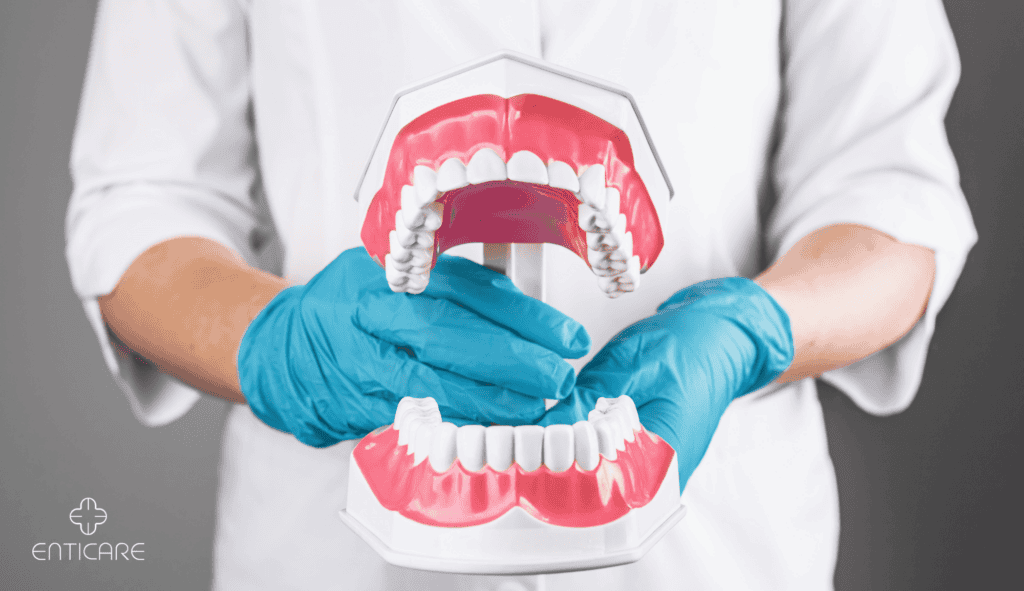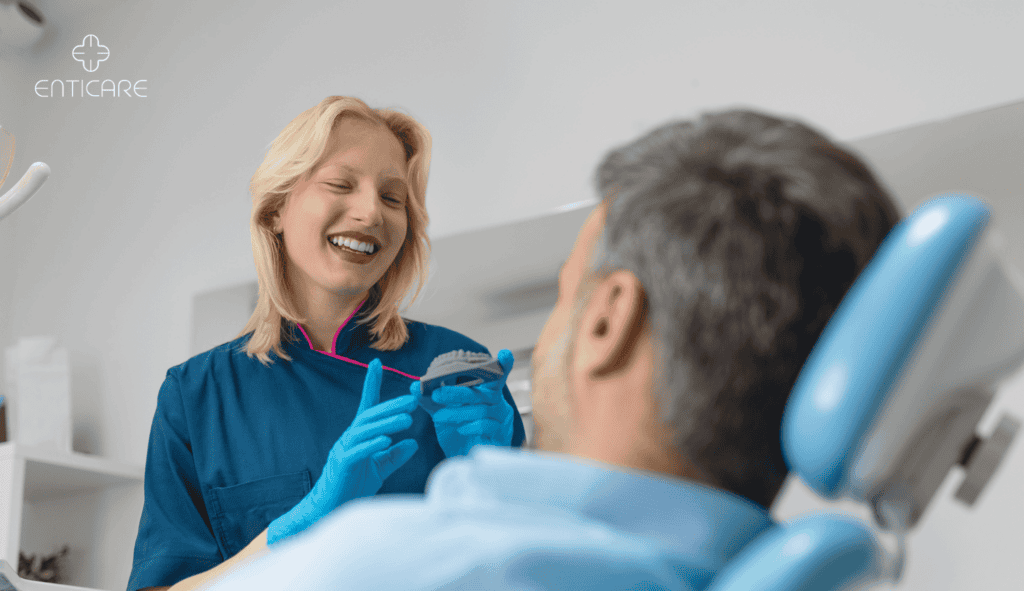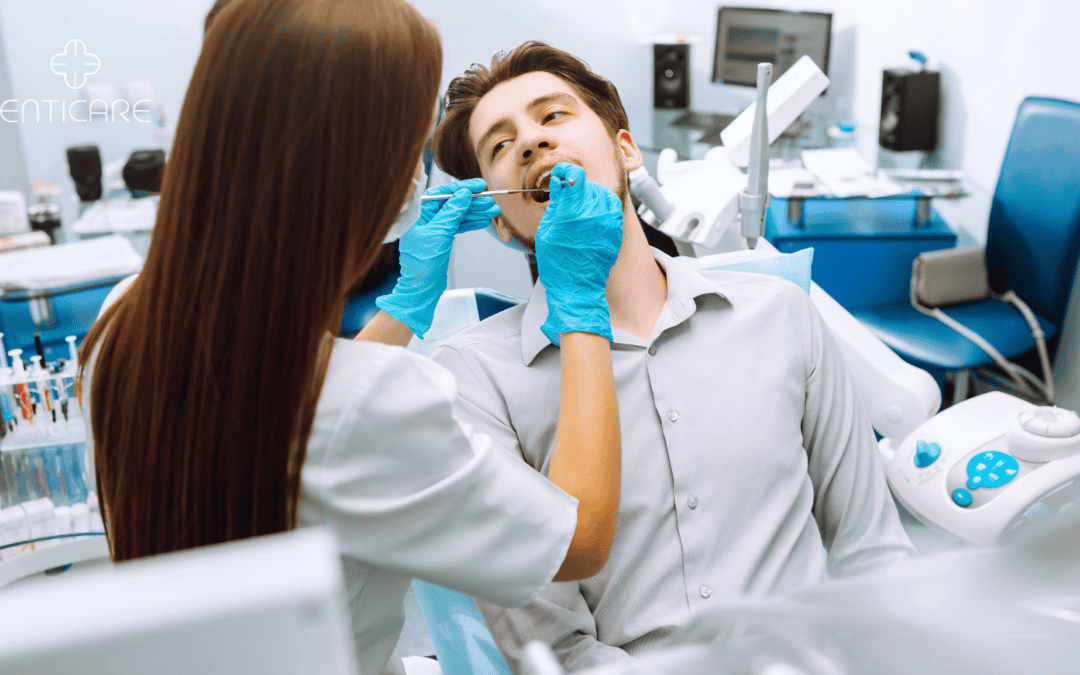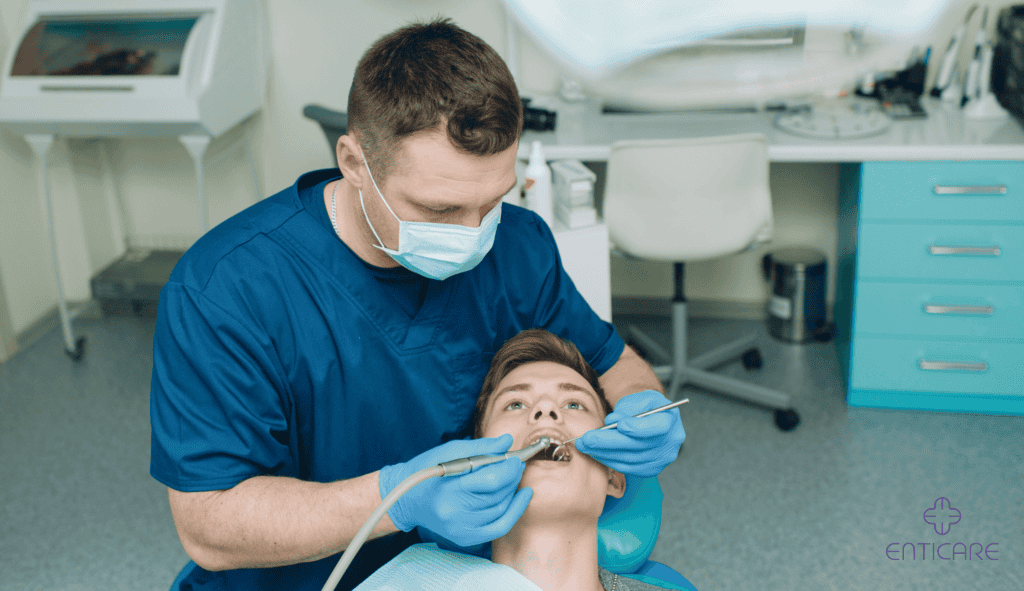Sleep apnea and temporomandibular joint disorder (TMJ) are common yet often misunderstood conditions that can significantly affect daily life. They may cause disrupted sleep, chronic pain, and a host of other symptoms that reduce quality of life. Sleep apnea syndrome includes different types of sleep apnea, such as obstructive, central, and complex sleep apnea syndrome, which lead to frequent disruptions in breathing during the night. What many people don’t realize is that orthodontics can offer effective solutions for managing these conditions. In this blog, we will explore how orthodontic treatment can help address both sleep apnea and TMJ.
Orthodontics and Sleep Apnea: How Can They Help?
Orthodontic Causes of Sleep Apnea
Orthodontic problems can significantly contribute to the development of sleep apnea, particularly obstructive sleep apnea (OSA). Several common orthodontic issues can lead to airway obstruction during sleep, exacerbating this sleep disorder.
- Overcrowding: When teeth are overcrowded, the tongue and other soft tissues in the mouth can become displaced, leading to airway obstruction. This displacement can make it difficult for air to flow freely, increasing the risk of sleep apnea.
- Crooked and Misaligned Teeth: Misaligned teeth can cause the jaw to shift forward or backward, narrowing the airway. This misalignment can obstruct airflow, making it harder to breathe during sleep.
- Bite Issues: Problems such as an overbite or underbite can cause the jaw to shift in ways that narrow the airway. These bite issues can significantly increase the risk of developing sleep apnea.
- Teeth Clenching (Bruxism): Clenching or grinding teeth can cause the jaw to shift forward, narrowing the airway and contributing to sleep apnea. This condition often goes unnoticed but can have a substantial impact on sleep quality.
- Narrow Airways: A narrow airway can result from various orthodontic problems, including a narrow palate or a deviated septum. These conditions can restrict airflow and lead to obstructive sleep apnea.
Addressing these orthodontic issues through targeted orthodontic treatment can help alleviate sleep apnea symptoms. Orthodontic interventions can:
- Widen the Airway: Expanding the palate or advancing the jaw can create more space in the airway, reducing the risk of sleep apnea.
- Improve Bite Alignment: Correcting bite issues can enhance jaw alignment, making it easier to breathe during sleep.
- Reduce Teeth Clenching: By addressing bite problems and improving jaw alignment, orthodontic treatment can decrease teeth clenching, alleviating sleep apnea symptoms.
Aligning the Jaw for Better Breathing
Orthodontics can play a crucial role in treating sleep apnea by correcting jaw alignment. Aligning the jaw can help manage complex sleep apnea syndrome by improving airflow during sleep. In cases of severe obstructive sleep apnea, surgical solutions like mandibular advancement surgery may be necessary for patients who struggle with oral appliances and CPAP therapy. If the upper and lower jaws are misaligned, it can narrow the airway, increasing the likelihood of airway blockages. Orthodontists use tools such as braces or oral appliances to adjust the jaw and improve airflow during sleep.
Oral Appliance Therapy for Sleep Apnea
A popular orthodontic treatment for sleep apnea involves using custom-made oral appliances, known as oral appliance therapy. Oral appliance therapy can be effective in managing complex sleep apnea syndrome by keeping the airway open. These devices reposition the lower jaw or tongue to keep the airway open. Oral appliances are a less invasive option compared to surgery and have proven effective in reducing sleep apnea symptoms.
Expanding the Palate to Improve Airway Space
Some orthodontists may recommend palate expansion to widen the upper jaw, which creates more space in the nasal passages and improves airflow, helping to manage sleep apnea syndrome. Sleep-disordered breathing (SDB) is a significant health concern linked to cognitive dysfunction and cardiovascular disease, making proper diagnosis and management crucial. This is particularly helpful in children and adolescents but can benefit adults as well. Expanding the palate not only helps with breathing but also improves overall dental alignment.
Airway-Focused Orthodontics
Airway-focused orthodontics is a specialized approach that prioritizes the health and function of the airway, recognizing its critical role in overall well-being. This method goes beyond traditional orthodontic treatment by addressing issues that can affect breathing and sleep quality. Airway-focused orthodontics can help manage complex sleep apnea syndrome by improving breathing and sleep quality. By focusing on the airway, orthodontists can help patients breathe more easily, sleep more soundly, and enjoy better overall health.
The process begins with a comprehensive evaluation of the airway, including the nasal passages, throat, and lungs. This thorough assessment helps identify potential issues such as narrow airways, deviated septums, or enlarged tonsils that may contribute to breathing difficulties or sleep disorders like obstructive sleep apnea.

TMJ Disorder: What Causes the Pain?
The Role of the TMJ Joint
The temporomandibular joint (TMJ) connects the jaw to the skull and is responsible for movements like chewing and speaking. TMJ disorder occurs when this joint is damaged or misaligned, leading to pain, stiffness, and clicking sounds when opening the mouth.
Common TMJ Symptoms
TMJ disorder symptoms can vary but often include pain in the jaw, headaches, earaches, and discomfort when chewing. Some individuals may also experience a “locked” jaw, making it difficult to open or close their mouth fully. This can be a debilitating condition if not treated properly.
Causes of TMJ Disorder
Several factors contribute to TMJ disorder, including teeth grinding (bruxism), jaw misalignment, injury to the jaw, and stress. Orthodontic issues, such as an improper bite, can also exacerbate TMJ symptoms. Identifying the root cause of TMJ disorder is crucial for developing an effective treatment plan.
How Orthodontic Treatment Can Help TMJ Disorder
Correcting Bite Misalignment
Orthodontists can correct bite issues that contribute to TMJ disorder through braces or other alignment methods. When teeth are not properly aligned, excess strain can be placed on the TMJ joint. By bringing the teeth and jaw into proper alignment, the pressure on the TMJ is relieved, reducing pain and discomfort.
Orthodontic Appliances for TMJ
In addition to braces, orthodontists may use splints or mouthguards to help manage TMJ symptoms. These devices can reduce teeth grinding and clenching, which are common triggers for TMJ pain. Splints reposition the jaw and stabilize it, allowing the TMJ joint to heal.
Jaw Surgery for Severe Cases
In more severe TMJ cases, orthodontic surgery may be necessary to correct misalignments and relieve pressure on the jaw. Orthognathic surgery realigns the jaw to its optimal position, improving function and relieving pain. This option is typically considered after less invasive treatments have been explored.

Benefits of Orthodontic Treatment
Orthodontic treatment offers a multitude of benefits that extend far beyond achieving a straighter smile. One of the most significant advantages is the improvement in breathing and airway function, which can have a profound impact on overall health and well-being, especially for managing sleep apnea syndrome.
For individuals with sleep disorders such as obstructive sleep apnea, orthodontic treatment can be life-changing. By improving the alignment of the teeth and jaws and expanding the upper airway, orthodontic interventions can reduce the severity of sleep apnea and enhance sleep quality. This, in turn, can alleviate symptoms like excessive daytime sleepiness and improve overall energy levels.
Other benefits of orthodontic treatment include:
- Improved Oral Health: Properly aligned teeth are easier to clean, reducing the risk of tooth decay and gum disease.
- Enhanced Self-Confidence: A beautiful smile can boost self-esteem and confidence.
- Overall Health and Well-Being: Better oral health and improved sleep contribute to a healthier, more vibrant life.
Orthodontic treatment is not just about aesthetics; it’s about enhancing the quality of life by addressing underlying health issues and promoting better overall health.

Taking the First Step: Scheduling an Orthodontic Consultation
Orthodontics offers more than just straight teeth; it can relieve those suffering from sleep apnea syndrome and TMJ disorder. By addressing underlying jaw alignment issues, orthodontic treatment improves breathing, reduces pain, and enhances sleep quality. If you suspect that sleep apnea or TMJ disorder is affecting your health, now is the time to seek help.
Schedule a Consultation Today!
Ready to take control of your health? Please schedule an appointment with our team at ENTicare to explore your options for treating sleep apnea syndrome and TMJ disorder through orthodontic care. Don’t wait—your health and well-being depend on it!


